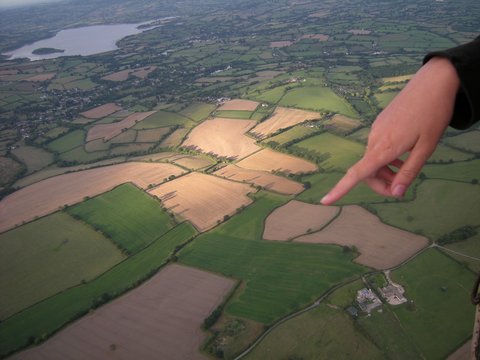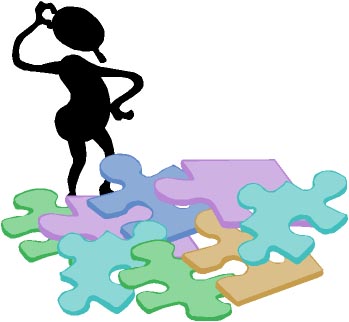How do you engage in conflict, do you run towards it or cower away from it. This video is an opportunity for a simple reflection on your style of behaviour and how that style might interact with other people.
Posted: Personal Training Reflections Conflict and Mediation Coaching
How do you engage in conflict, do you run towards it or cower away from it. This video is an opportunity for a simple reflection on your style of behaviour and how that style might interact with other people.
Posted: Personal Reflections Conflict and Mediation Coaching
In moving from Conflict to Clarity a key skill is our ability to pause. Our ability to recognise that things are heading in a difficult direction and being able to call time out. This video offers some simple thoughts and practices on Pausing.
Posted: Personal Reflections Conflict and Mediation

Are you carrying too much around with you?
One of the things that tends to occur when we get into conflict with someone else is that we get hurt.
When we get hurt our inclination is to try to protect ourselves.
We often do this by donning a suit of armour, a protective layer which has the purpose of stopping us receiving further hurt from the other person.
The consequence of putting on the armour is that the other person then sees someone in front of them in a suit of armour, perhaps carrying a sword. This can seem threatening to them. So what do they do, they put on their own suit of armour in case they might get hurt by the armoured, sword wielding person in front of them.
Our experience from inside the armour is that we feel vulnerable and that what we are doing is a good way to protect ourselves. To other people we can look aggressive and possibly dangerous.
We now have two people wearing armour, weighed down by it but also protected by it. Each of them are waiting for the other to stop being so threatening. Neither of them will take off their armour because it is of course protecting them.
We have a situation that can last for excessive amounts of time. My relationship with my dad looked like this and was uncomfortable for both of us for 30 years. 30 years of pain, distress and we and other people being negatively affected. The armour becomes normal after a while, we stop noticing that we are carrying it with us, it’s just who we are. In fact it can get bigger and heavier, we pick up more weapons and shields, get a thicker breast plate in case our heart gets hurt.
Clearly it is okay to protect ourselves – especially when an event triggers us into putting on our armour, the question is how long might we want to carry it around with us?
Some situations seem to demand that we keep it in place, situations of abuse or where we are at the lower end of a huge power imbalance. Situations where in our estimation it genuinely isn’t safe to remove it.
As a mediator I have individual meetings with people in dispute. Part of what I am trying to assess and that I talk about with them, is whether it is safe enough for them to take part in a mediation meeting with the other party where they might be able to take off some of their armour.
It’s always a risk to take off our armour – to show our vulnerability – but it is the only way of creating change.
If you can take the risk of removing a bit of your armour – it invites the same response in the other person. They may not be able to join you but they will feel the difference.
What it does for you is that it makes you lighter, more open and more ready for change.
We often need help to do this, to be in a safe enough environment with sufficient support but it changes our lives when we do it.
Which bit of your armour do you need to put down?
Posted: Conflict and Mediation

About 5 years ago, whilst on a process oriented psychology course, we were dealing with issues of our own identity, exploring our bigger self – the thing that drives and motivates us. The exercise had a shamanic aspect and was not using rational, intellectual processes. What appeared for me through the process was an identity as a healer.
My immediate reaction was one of discomfort and awkwardness. It somehow felt too big or weird or unlike my general view of myself – the temptation was to push it away and give it no more notice.
To some extent I succeeded, I got on with my life, worked with conflict and only occasional thought about healing.
Recently though it has resurfaced, and this time it has come back again as a body based experience whilst on another course. I wasn’t looking for it, it found me.
To be comfortably English about this I feel discombobulated – do I ignore it again or do I try it on for size and see what happens?
If I do pick up this identity how do I do what I do through this filter? Who am I if this is the approach I take to my work, my relationships and in fact to any interaction?
To explore this it seems important to think about my views and prejudices about healing?
From the initial experience, I noticed that my reaction was to view healing as something to do with the ‘laying on of hands’, and that this was mainly oriented towards helping the body. I did this despite recognising that healing has many forms and works on all aspects of our humanness, but my prejudices were intact and working well – which of course meant that I wasn’t a healer.
As I thought more about healing I gently allowed myself to think about working with conflict as a form of healing, even though I continued to identify working with the mind and emotions as somehow less significant, from a healing perspective, than working with or through the body.
So, when I engage with people as a mediator, what is my underlying intent? Why am I making this engagement? Is it to earn money, is it a job or is it something deeper. For me it is all of these – I earn a living and it is a vocation, something I discovered that delights and fascinates me and in which I have built some ability.
My intent has often been to help, to see if I can support a conflict to unfold, so that the way forward becomes clear. I have looked at my own need to feel good by ‘sorting’ the parties and believe I am not driven by this any longer (I was when I started).
If I pick up the healer aspect, what happens? Is the experience different or new, does my intent change, do I or they behave differently?
I have yet to discover, this feels like a work in progress and I will happily receive any help that is offered.
Whichever aspect of a person I engage with, I am involved in a process of healing and I need to face this directly. It is bigger than earning a living or feeling good that I helped within a dispute. It is about saying clearly that mediation offers an opportunity to heal and then dealing with the consequence of this statement.
The consequences run in two directions; toward me and to the people that I work with.
When looking at the impact on me, does this internal stance change me? My immediate thought is something to do with responsibility. My usual stance as a mediator is to say that I have a responsibility to the people I work with but not for them – this stance offers me a bit of psychological distance and I believe helps me care without becoming over involved – I can be effectively multipartial.
As a healer, who happens to mediate, I have a sense that this responsibility has shifted but I’m not yet sure how.
Part of my limited understanding of ‘healing’ is that it is something that occurs through the healer – it is not them doing healing, rather that they provide a channel that enable the healing to occur. The system ‘knows’ what it needs and the healer provides an opportunity for this to start to happen. The healer needs to clear some space in themselves to support this movement through them and so will have required some training, healing and support for this to happen.
I am in uncharted territory – I want to know if others who happen to mediate also share this sense of identity, are you at ease with it, does it help or hinder. Do you talk about it with clients? If you don’t, what might happen if you did? Can I offer my services as a healer rather than as a mediator?
At its best, mediation has had its magic moments, those times when my presence becomes irrelevant, the parties have moved into their own process and no longer need any assistance. Something that had been broken has been fixed, perhaps even healed. The parties have stepped through a pain into a different relationship. My interventions have been graceful and fluid – I have been part of something much bigger than me.
Any thoughts, ideas or help will be appreciated on this journey.
Posted: Conflict and Mediation Training

It’s been a few months since I last trained a group of mediators and I had almost forgotten the pleasure of this process.
People in organisations come on this sort of course because they are looking to develop their skills - they get this but they also get challenged, pushed and nudged into a different way of thinking.
Most of us, whatever our job or hierarchical level, spend much of our time as paid problem solvers. This may be about deciding which room to clean first or whether or not to merge with a particular company. This tendency with our tasks can overlap into how we deal with people. Someone presents us with a problem that they have and we often try to sort it (or them) out.
We feel like we have to give answers and know the right thing or suggestion to make.
Training in interactive mediation requires a letting go of this tendency, sitting back and letting the parties deal with the situation. It takes some time and effort – and often some discomfort in quietening our desire to ‘sort it’.
In order to become a skilled mediator we also need to have a good understanding of the mediation process and possibly more importantly, we need to be able to manage our reactions to others’ conflictual behaviour. This requires us to look at our own relationship to conflict and our conflict history – which is not always a comfortable journey.
The pleasure of being the trainer is that of guiding people through this journey; helping them stop problem solving and to become more confident with allowing conflict to happen.
They need to become conflict enablers. Well that’s a new thought!
Posted: Conflict and Mediation

This post has a workplace orientation but I hope it is also relevant in other contexts.
It is important to remember that most disagreements never escalate into conflict. Usually an event happens, you say something, the other person says, "Oh sorry about that" and both of you are satisfied. What turns a disagreement into a conflict is when you say something and you don't get the response you hoped for. Instead you are ignored, not taken seriously, not listened to, dismissed as trivial, not acknowledged or get what seems to be an over-reaction.One of the key principles to dealing effectively with a conflict situation is to separate your reactions from responses. A reaction is where I don't feel as if I have a choice about what I am saying, feeling or doing whereas when I make a response I have moved to an internal place where I can choose what I say and how I say it.
Dealing with conflict often feels difficult and for many of us it is something we would rather avoid. It takes effort and is sometimes risky but a small stretch out of our comfort zone can sometimes stop a conflict escalating to truly damaging proportions.A version of this article appeared in the Times Educational Supplement